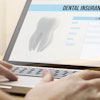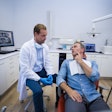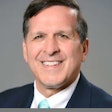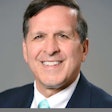
I know it's easy to first think of what technical skills we can perform -- such as implant placement or endodontic treatment -- or even more specifically what we do technically with our hands, such as choosing burs to prep a good-looking set of veneers on Nos. 8 and 9.
But, back up with me. Yes, that means we have to stop the car first. We must stop thinking about the actual technical act of creating dentistry for our patients. We will get to that, but first there is something more important we must do with our hands before we even place one finger into someone's mouth: We must communicate outside of the operatory with our hands.
 Lisa Knowles, DDS.
Lisa Knowles, DDS.How? It starts with the handshake. Historically, the handshake started out meaning, "We have a deal." It meant one person's word could be trusted, and this was confirmed by the sealing of two people's hands in direct contact with one another making a bond -- a pact. Typically eye contact accompanied the act.
Today, the handshake has been replaced with a 10-page legal document outlining each and every expectation in an agreement. And, rightly so, because many of us have learned that a handshake does not always mean the same thing to every person when we make agreements. A handshake still does mean something to our patients, however. On the front end of an appointment, it means, "How do you do?" It means, "Welcome to my practice." It means, "I acknowledge you." It means, "I am aware of your needs." At the end of an appointment it means, "Thank you." It means, "I appreciate your time with me." It means, "I have done my best for you." It means, "We have closure."
Really? All of this in a five-second handshake? Yes! I am not going to say a handshake is necessary every time in every situation. Some patients truly do not like to touch other people. For dentists and team members, however, I do not think we have an option. We are a touching profession. It's one place where touching is OK -- and a necessity.
So, here are my top tips for using our hands to our advantages while practicing dentistry:
Practice handshakes within the office before trying them out on patients. Nothing worries me more than when I get a light, soggy handshake from someone. Even if they are the most confident, wonderful person in the world, a bashful handshake sets off an alarm in my head that says, "Take note -- this person is shy, unsure, or scared." Again, the person may not be any of these, but the nonverbal communication being signaled tells this story.
Conversely, the person who shakes my hand and makes my knuckles touch worries me, too. My communication alarm says, "Take it easy -- you are crushing my hand. You must be nervous (overcompensating), overconfident, or completely unaware of my needs."
“We must communicate outside of the operatory with our hands.”Look for patients who want a handshake. I missed this at first. I cannot say I was always a hand shaker. Women do not get this engrained in their brains like some boys and men do. I had to catch up in this social communication grace, because I realized this experience does mean something. It may not mean as much as it did in the past -- as far as deal sealing -- but it still takes on an important values-based process in relationship building.
As a woman, handshakes can lead to awkward situations. Many times, men shake other men's hands and do not shake women's hands. Be intentional and shake each person's hand (except those that truly do not prefer a handshake). If you do it for one person and not for the other, it seems preferential and unfair to one group of patients. This can apply to professional outings as well. At a recent meeting, my colleagues entered a restaurant. I stood up to shake their hands but was completely ignored. Two dentists shook the hands of the men at the table, but not the hands of the women at the table. Instead, they gave me a little wave. It was odd and awkward. Although somewhat different in the past, a good rule is to shake everyone's hand.
Put your whole hand into someone else's hand when committing to the handshake. Finger tip handshaking is awkward. I do not know what to do with someone's fingertips. This is not a princess handshake; no prince is going to end the shake with a kiss on the hand (although I have had a patient do this). Typically, however, this full handshake communicates to others that we want to embark in a professional relationship. We shake hands platonically, and that is how we intend to do business.
Avoid high fives, knuckle bumping, or, worse, forced hugging on first encounters. Save these actions for close friends, well-developed relationships, or that one interesting patient who does this to you first.
Communication is difficult. What works for one person may not work for another person. I provide these tips based on wide-spectrum norms, and I cannot say each person prefers to have his or her hand shaken or not. It's best to ask and pick up on nonverbal intentions. When in doubt, put that hand out.
I do know that many people like to be touched -- appropriately, of course. We have a tremendous opportunity to use our positions to help ease our patients' worries with solid, committed touch experiences in our offices. It often begins and ends with our hands. How we learn to communicate with our hands goes way beyond teeth Nos. 1 through 32: We have the ability to help our patients feel safe and connected when we touch them with just the right amount of pressure and with just the right amount of care. It's all in our hands, our heads, and our hearts.
Lisa Knowles, DDS, is the founder and CEO of IntentionalDental Consulting. For more information, contact her at [email protected] or 517-331-3688. Visit her blog at Beyond32Teeth.com or website at IntentionalDental.com.
The comments and observations expressed herein do not necessarily reflect the opinions of DrBicuspid.com, nor should they be construed as an endorsement or admonishment of any particular idea, vendor, or organization.



















